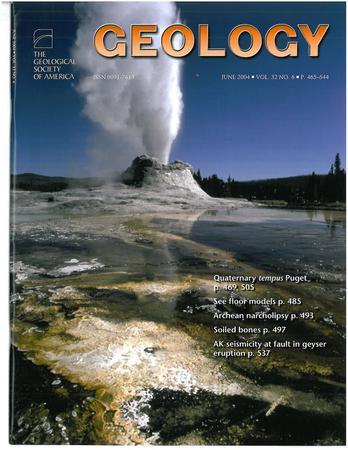Basin-scale development of giant collapse structures induced by gypsum diagenesis
IF 4.6
1区 地球科学
Q1 GEOLOGY
引用次数: 0
Abstract
Across buried sedimentary basins, the dissolution-prone nature of evaporite sequences drives the formation of collapse structures (e.g., sinkholes), fundamentally transforming landscapes at large scales. Understanding where, why, and how such structures form is crucial, given that they pose geological hazards that may threaten human safety and infrastructure stability or may affect subsurface resource extraction and geological storage. We use three-dimensional seismic reflection and borehole data from the Southern North Sea Basin to document giant (kilometers wide and several hundred meters deep) collapse structures within the Zechstein Supergroup (Permian) that developed at the basin scale (>10,000 km2). Critically, these structures invariably overlie gypsum buildups capped by thick halite, with seismic-stratigraphic relationships enabling precise dating and facilitating accurate modeling. We propose that the transformation of gypsum to anhydrite during early burial initiated the extrusion of NaCl-undersaturated water, which provoked dissolution of the capping halite, leading to collapse at the depositional surface. The resulting landscape was buried and thus preserved by a potash infilling unit. To the best of our knowledge, neither the scale nor the genetic mechanism of these structures has previously been documented in the stratigraphic record.石膏成岩作用下巨型崩塌构造的盆地尺度发育
在埋藏的沉积盆地中,蒸发岩序列易于溶解的性质推动了崩塌结构(如天坑)的形成,从根本上改变了大规模的景观。考虑到这些结构构成的地质灾害可能威胁到人类安全和基础设施的稳定,或可能影响地下资源的开采和地质储存,了解这些结构形成的地点、原因和方式至关重要。我们使用三维地震反射和来自北海南部盆地的钻孔数据来记录在盆地规模(10,000平方公里)上发育的Zechstein超群(二叠纪)内的巨大(公里宽,数百米深)崩塌结构。至关重要的是,这些结构总是覆盖在厚厚的岩盐覆盖的石膏上,地震-地层关系使得精确的年代测定和精确的建模成为可能。我们认为,早埋期石膏向硬石膏的转化引发了nacl欠饱和水的挤压,引起盖层岩盐的溶解,导致沉积表面塌陷。由此产生的景观被埋了起来,从而被钾肥充填装置保存了下来。据我们所知,这些构造的规模和成因机制在以前的地层记录中都没有记载。
本文章由计算机程序翻译,如有差异,请以英文原文为准。
求助全文
约1分钟内获得全文
求助全文
来源期刊

Geology
地学-地质学
CiteScore
10.00
自引率
3.40%
发文量
228
审稿时长
6.2 months
期刊介绍:
Published since 1973, Geology features rapid publication of about 23 refereed short (four-page) papers each month. Articles cover all earth-science disciplines and include new investigations and provocative topics. Professional geologists and university-level students in the earth sciences use this widely read journal to keep up with scientific research trends. The online forum section facilitates author-reader dialog. Includes color and occasional large-format illustrations on oversized loose inserts.
 求助内容:
求助内容: 应助结果提醒方式:
应助结果提醒方式:


